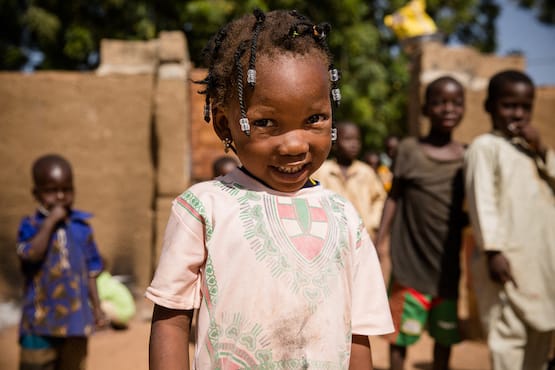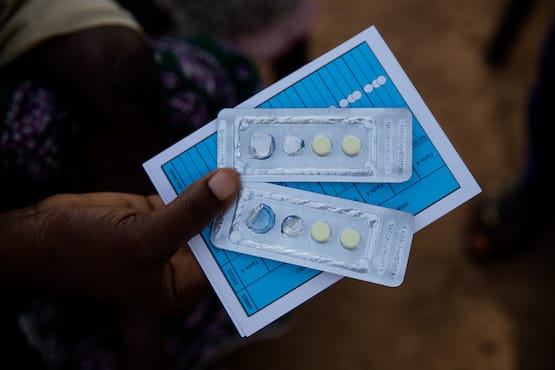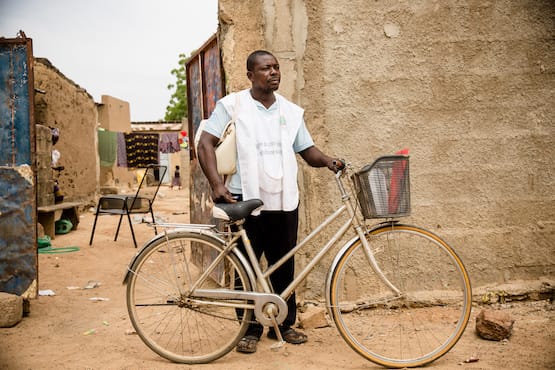The problem: malaria
Malaria, though almost nonexistent in affluent countries, is pervasive in low income countries in tropical and subtropical regions. It takes an enormous toll on individuals, families, and national economies. When a family member contracts malaria, it not only threatens that person’s health, but their family — usually already poverty stricken — can fall further into destitution. This is due to a range of factors, such as navigating the logistics and expense of seeking treatment, losing education or wages from missing school or work, and burial expenses for deaths.
Such direct costs have been estimated to be over US$12 billion per year worldwide. [1] Communities and nations sustain even greater costs from lost productivity and the drain on medical systems.

It’s no wonder that the Centers for Disease Control and Prevention characterizes malaria as “one of the most severe public health problems worldwide.” [2] The World Health Organization (WHO) estimates that there were 219 million cases of malaria and more than 608,000 deaths globally in 2022 [3], with over 90% of those in Africa. Pregnant women and children under the age of 5 are especially vulnerable: a child dies from malaria every two minutes. [4]
The solution: seasonal malaria chemoprevention — or SMC
Since 2012, the WHO has recommended SMC for children ages 3 months to 5 years living in areas of high seasonal malaria transmission in the Sahel subregion of Africa: it has been proven to reduce approximately 75% of all malaria episodes and 75% of severe malaria cases. When children do not contract malaria, their own health is protected and the transmission pool is reduced, which helps the whole community. [5]
SMC consists of four monthly prophylactic treatments of amodiaquine (AQ) plus sulfadoxine-pyrimethamine (SP) during the period of greatest risk, which typically coincides with a region’s rainy season. The tablets easily dissolve with water. Both SP and AQ are given to the child by a trained community distributor. The child’s caregiver is then instructed to give the child two remaining doses of AQ daily in the following two days.

How Malaria Consortium works
Malaria Consortium is a global leader in SMC. They support a wide range of elements required for a successful SMC program, including:
- Developing training materials and data collection tools
- Training all SMC implementation and evaluation staff
- Assessing, procuring, storing, transporting, and distributing SMC medicines
- Planning, designing, and advocating for social mobilization tools
- Researching, evaluating, and improving the quality and efficiency of SMC programs
- Fundraising and managing finances
Malaria Consortium collaborates with communities, governments, academic institutions, and local and international organizations to build localized expertise and sustainability: 95% of staff work in malaria-endemic areas. Their health workers and community distributors deliver SMC treatments, primarily door-to-door. This approach that has been shown to achieve optimal coverage.

Malaria Consortium also conducts coverage surveys, tracks changes in malaria incidence and deaths, and monitors drug resistance — evidence that’s useful in influencing governments and motivating greater demand for and production of accessible, affordable, quality SMC drugs.
From 2015–2017, Malaria Consortium was the primary recipient and implementer of Unitaid’s US$68 million ACCESS-SMC project. Unitaid notes that the ACCESS-SMC project supported National Malaria Control and Elimination Programs in seven countries, “fulfilling more than 25% of the region’s need, while monitoring the safety, efficacy, cost, and public health impact of seasonal malaria chemoprevention at scale.” [6]
In 2017, 15.7 million children in 12 countries in Africa’s Sahel subregion were protected through SMC programs — three of those countries were protected through the work of Malaria Consortium. However, an estimated 14–16 million children who could have benefited from this intervention could not be reached, mainly due to a lack of funding. [7]
Since 2017, Malaria Consortium has continued to implement SMC, largely using philanthropic directed funding from Good Ventures and individual donors.
